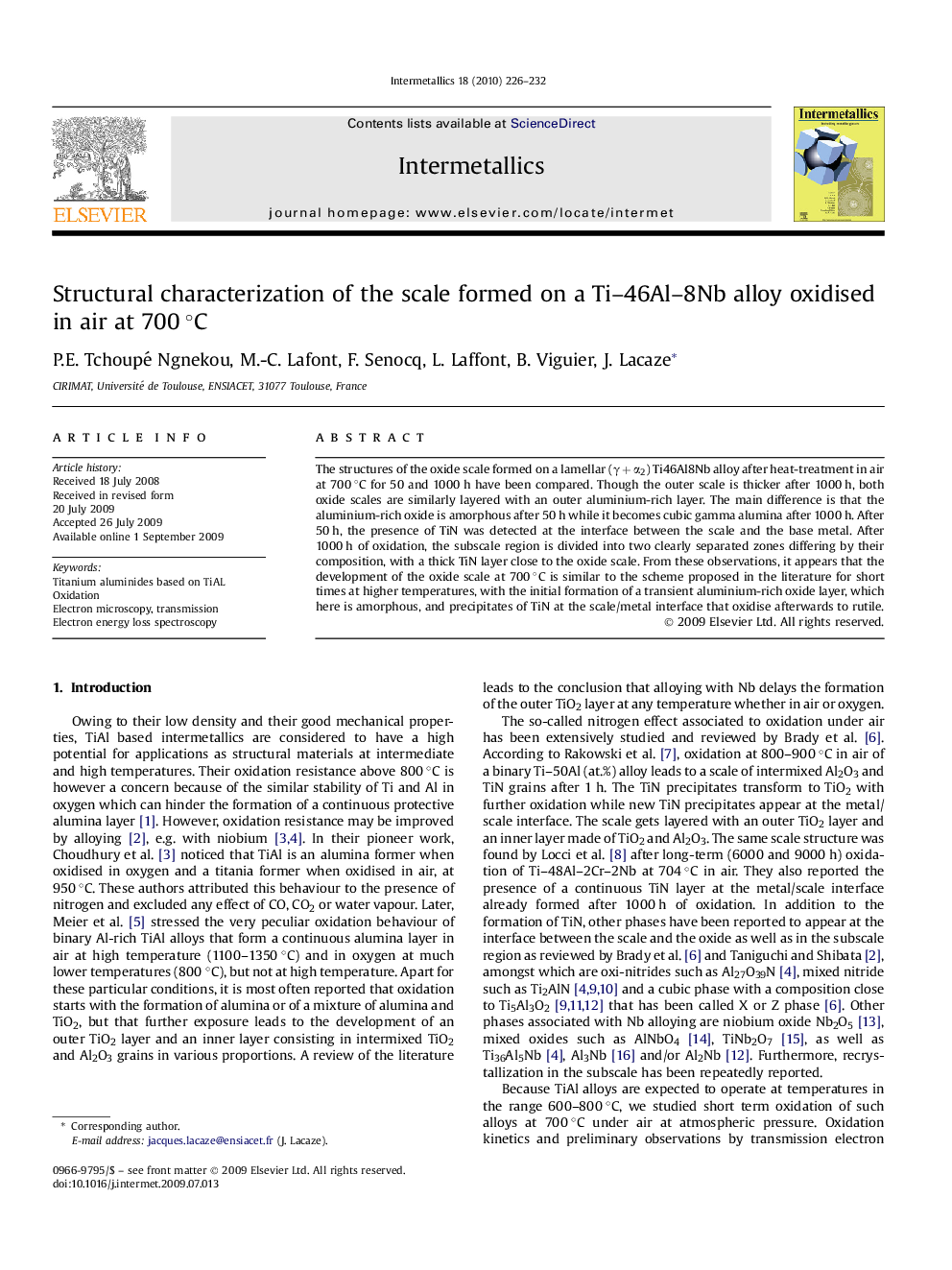| Article ID | Journal | Published Year | Pages | File Type |
|---|---|---|---|---|
| 1601462 | Intermetallics | 2010 | 7 Pages |
Abstract
The structures of the oxide scale formed on a lamellar (γ + α2) Ti46Al8Nb alloy after heat-treatment in air at 700 °C for 50 and 1000 h have been compared. Though the outer scale is thicker after 1000 h, both oxide scales are similarly layered with an outer aluminium-rich layer. The main difference is that the aluminium-rich oxide is amorphous after 50 h while it becomes cubic gamma alumina after 1000 h. After 50 h, the presence of TiN was detected at the interface between the scale and the base metal. After 1000 h of oxidation, the subscale region is divided into two clearly separated zones differing by their composition, with a thick TiN layer close to the oxide scale. From these observations, it appears that the development of the oxide scale at 700 °C is similar to the scheme proposed in the literature for short times at higher temperatures, with the initial formation of a transient aluminium-rich oxide layer, which here is amorphous, and precipitates of TiN at the scale/metal interface that oxidise afterwards to rutile.
Keywords
Related Topics
Physical Sciences and Engineering
Materials Science
Metals and Alloys
Authors
P.E. Tchoupé Ngnekou, M.-C. Lafont, F. Senocq, L. Laffont, B. Viguier, J. Lacaze,
